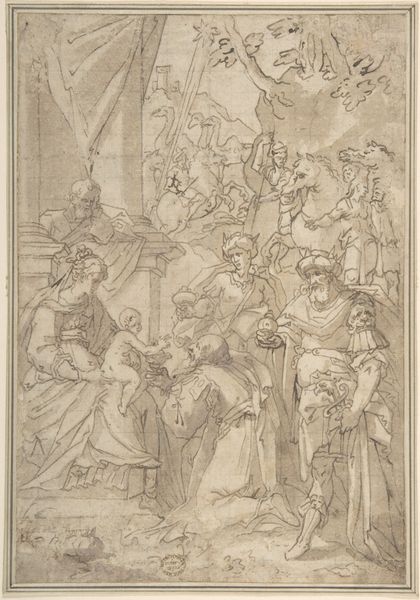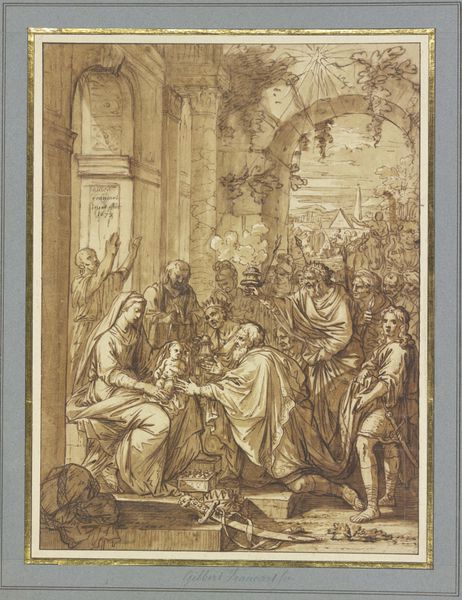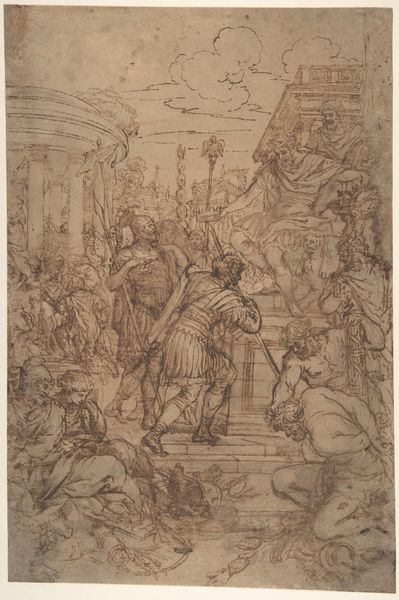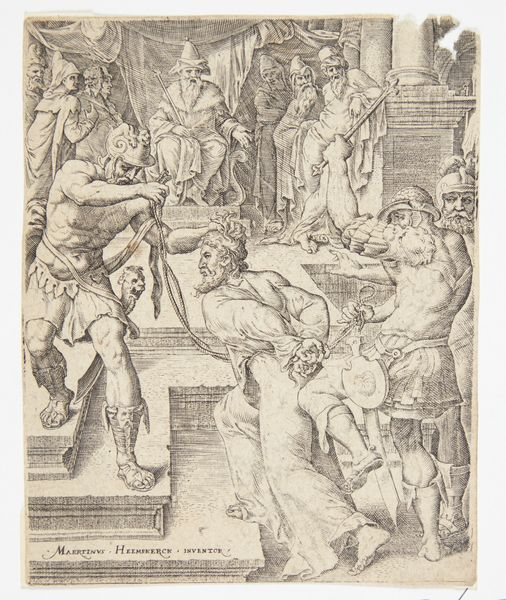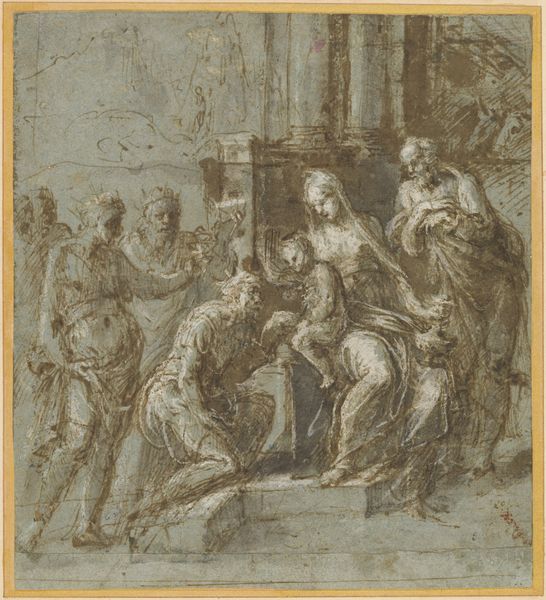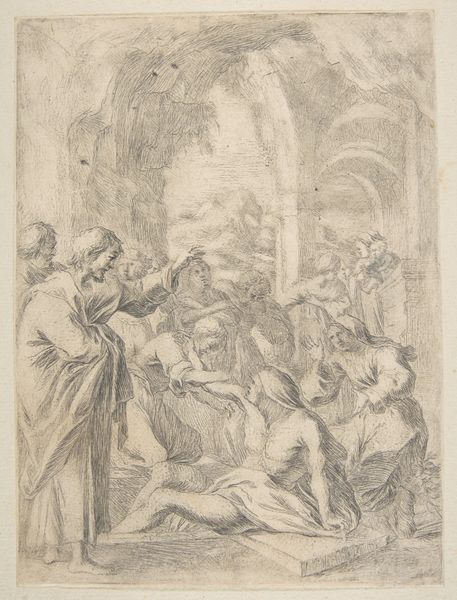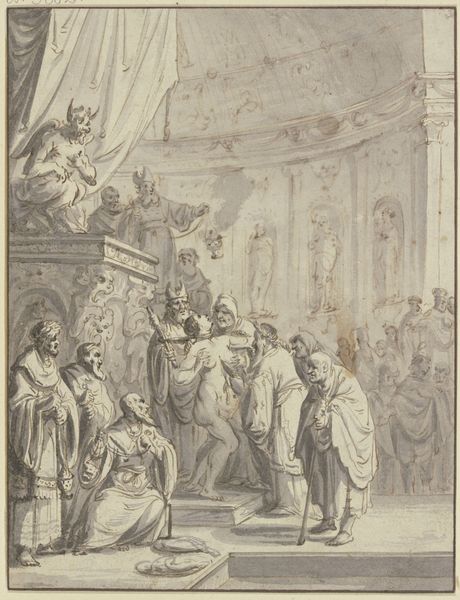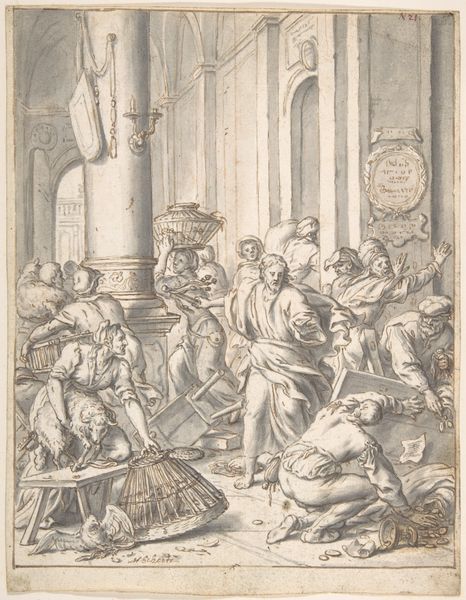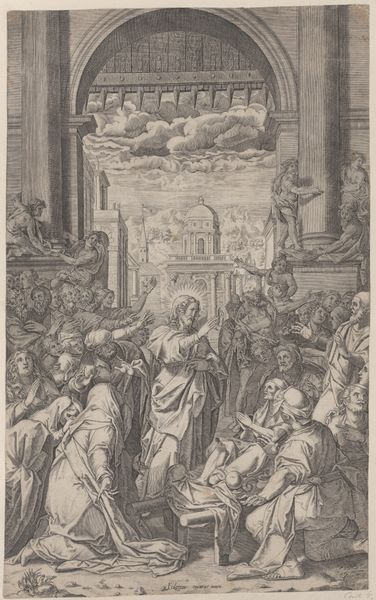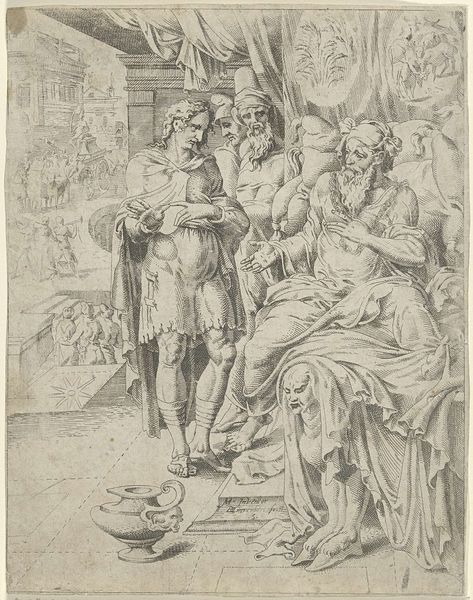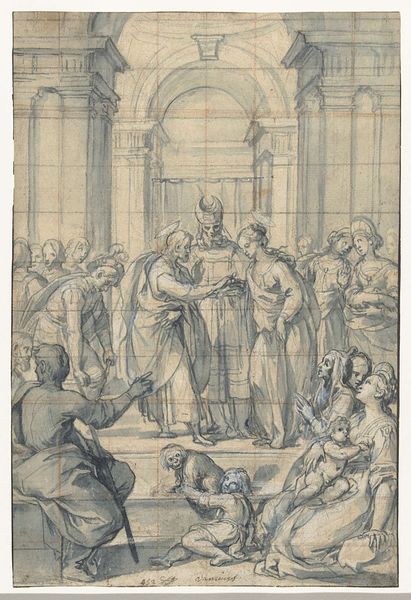
An Audience (recto); Sketch of a nude woman (verso) 1600 - 1700
0:00
0:00
drawing, ink, pen
#
portrait
#
drawing
#
ink drawing
#
baroque
#
ink painting
#
pen sketch
#
figuration
#
ink
#
child
#
ancient-mediterranean
#
men
#
line
#
pen
#
genre-painting
#
history-painting
Dimensions: 10-1/4 x 7-11/16 in. (26.1 x 19.6 cm)
Copyright: Public Domain
Curator: What a dreamy gathering! There's a hushed expectancy about it. Is this ink on paper? I can almost hear the rustle of fabric and the stifled whispers. Editor: Indeed. We are looking at "An Audience," an ink drawing likely from the 17th century, housed here at The Met. Though the artist remains anonymous, it's clear they were working within the Baroque idiom. Curator: Baroque, of course, with all its theatrical flair. The architecture looms grandly in the background, framing what seems to be some sort of royal or maybe even divine judgment? I see a figure enthroned, flanked by courtiers and cherubs... quite a spectacle. It's feels ancient, and a little unfinished, even? Editor: Precisely. The drawing is rich in the visual rhetoric of power, yet simultaneously, the somewhat sketch-like quality undermines any real sense of authority. It gives me the feeling of observing not a real historical event but rather a stage performance *of* a historical event, you know? There’s even a suggestion of an alternative figure study, a nude, on the back of this paper. Curator: An artist wrestling with form! That actually softens the pomposity I initially perceived. The casual nature of the strokes... the way the faces aren't entirely defined... it becomes less about historical documentation and more about the artist’s *own* searching. Like they're asking, "What does power *look* like? What is the essence of rulership?" rather than dictating what it is. Editor: I agree, and considering the period, it invites us to consider who such imagery served. Who commissioned or purchased these representations of power, and what role did they play in shaping public perception? Or was it only an exercise of style? The artist might have been considering the power behind his imagery as well as creating the effect. Curator: You always bring it back to the social fabric, don't you? I like that. To imagine the hands that held this, the minds that conceived it... and to think of it not as a statement, but a question whispered across centuries. Editor: That’s right. Art serves as evidence to reveal the intentions of the individuals, as well as, social needs of any epoch. A thought experiment on paper. Curator: Well, whatever it is, it certainly sparked something in me. Editor: And hopefully in our listeners as well! Thanks for exploring that fascinating interplay with me.
Comments
No comments
Be the first to comment and join the conversation on the ultimate creative platform.

